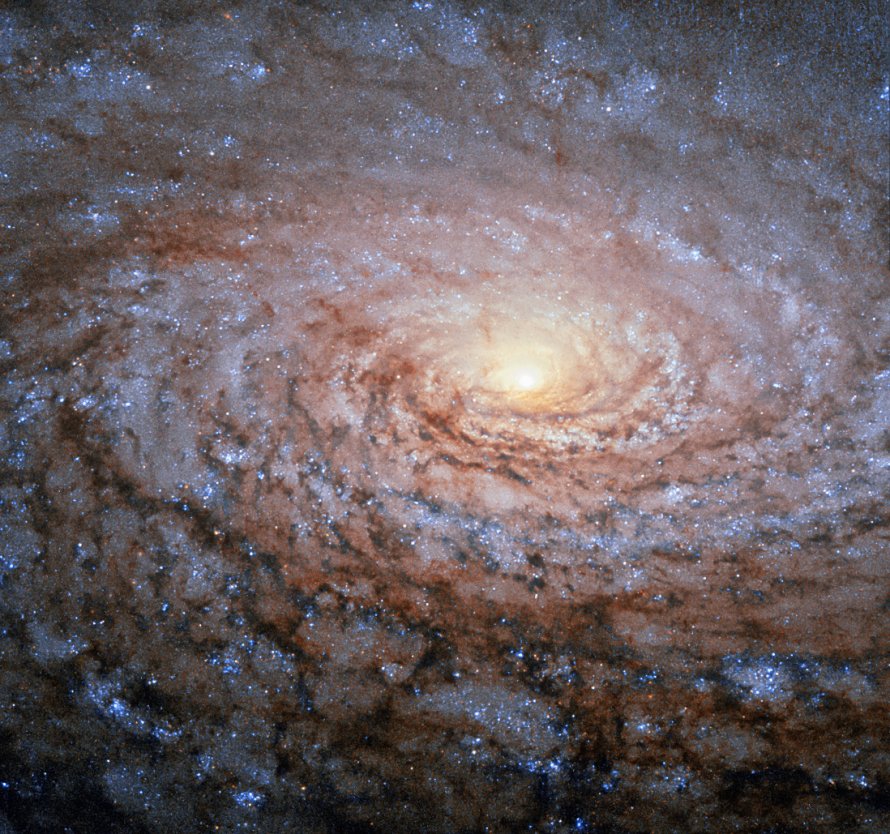M63 (NGC 5055) - Sunflower Galaxy
Messier 63 (NGC 5055), also known as the Sunflower Galaxy, is a spiral galaxy located in the constellation Canes Venatici in the M51 Group of galaxies. M63 is 29300000 light years away from Earth.
M63 is best viewed during early spring, is magnitude 9.3, and can be viewed with binoculars. M63 is 12.6' x 7.2' in apparent size. For reference, the full moon is 30'.
Observing difficulty: Intermediate
- Name:
- Sunflower Galaxy
- Type:
- spiral galaxy
- Constellation:
- Canes Venatici
- NGC or IC:
- NGC 5055
- Magnitude:
- 9.3
- Viewing:
- binoculars
- Size:
- 12.6' x 7.2'
- Distance (light years):
- 29300000 LY
- RA:
- 13h 15.8m
- Dec:
- 42 2'
- Season:
- early spring
- Galaxy group:
- M51 Group
- Messier Marathon #:
- 42
* The naked eye can see up to magnitude ~7-8 objects under ideal dark sky conditions.
The Sunflower Galaxy
Messier 63, also known as the Sunflower Galaxy, is a stunning example of a spiral galaxy. It's found in the northern constellation of Canes Venatici and was first discovered by the French astronomer Pierre M?chain in 1779. Notably, Messier 63 was one of the first galaxies in which spiral arms were observed.
Characteristics
Messier 63 is a part of the M51 Group, a group of galaxies in the constellation Canes Venatici that includes the famous Whirlpool Galaxy (M51). It's classified as an SAbc galaxy, indicating a spiral galaxy with moderate to loosely wound arms.
One of the striking features of Messier 63 is its well-defined, numerous spiral arms, which resemble the pattern of a sunflower - hence the galaxy's nickname. The galaxy's core is bright and yellowish, while its arms are populated by many young blue stars and a variety of star-forming regions.
Magnitude and Size
The Sunflower Galaxy shines at an apparent magnitude of approximately 8.6, making it a relatively bright galaxy, though it's too faint to be seen with the naked eye. Its actual magnitude, which is its brightness as it would appear from a standard distance, is estimated to be around -21. The galaxy extends about 10 arcminutes in diameter, translating to a spatial diameter of approximately 100,000 light-years.
Finding and Viewing Messier 63
Finding the Sunflower Galaxy requires a bit of patience and a decent telescope due to its faintness. It's best observed during the spring months when Canes Venatici is high in the sky for Northern Hemisphere observers.
Start from the Plough or Big Dipper asterism in Ursa Major. Follow the curve of the Dipper?s handle to locate the bright star Arcturus (in Bo?tes), then continue the same curved path to Cor Caroli, the brightest star in Canes Venatici. Messier 63 is just northeast of this star.
With a 4-inch or larger telescope under dark skies, you should be able to observe the galaxy as a small, hazy patch of light with a brighter center. In larger telescopes, and with careful observation, the spiral structure may become apparent, especially in good viewing conditions.



